In SEO, looking only at your own performance won’t give you the full picture.
You need a clear awareness of your competitors, their ranking, and the opportunities hidden in between if you really want to take your SEO efforts to the next level.
For this very reason, the Search Rank Tracker has an in-built competitor tracking feature. It is specifically designed to show you what your competitors are focusing on with their SEO.
Inside our modern, easy-to-read dashboard, you’ll find a clear display of your competitor sites targeting the same keywords as you. This perspective helps you understand your position in the industry, spot genuine competitors, and discover potential advantages.
In this guide, we’ll walk through the competitors dashboard step by step and show you how to use it to improve your SEO strategy.
Finding the Local Competitors Section
Step 01: Log in to your Search Rank Tracker dashboard.
Step 02: Select “Google Search” from the menu.
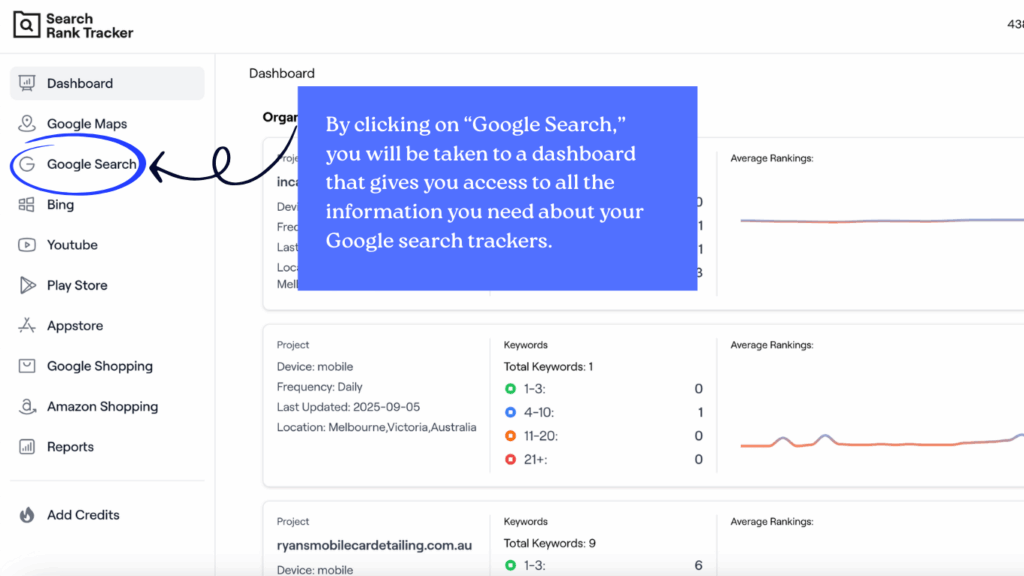
Step 03: Scroll down to locate your rank trackers table.
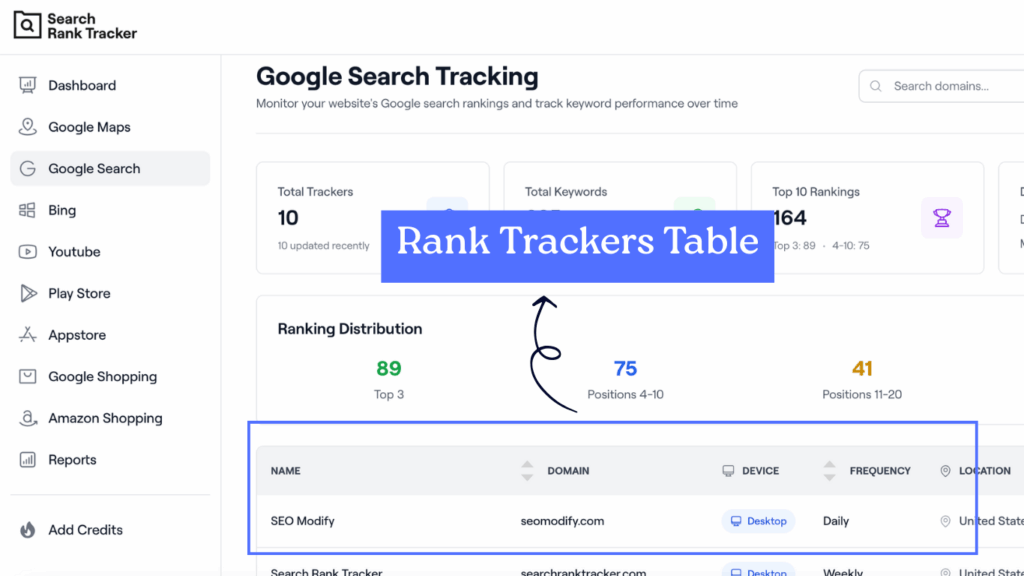
Step 04: Select the tracker in which you’d like to see competitor details.
Step 05: Click on the Competitor Section.
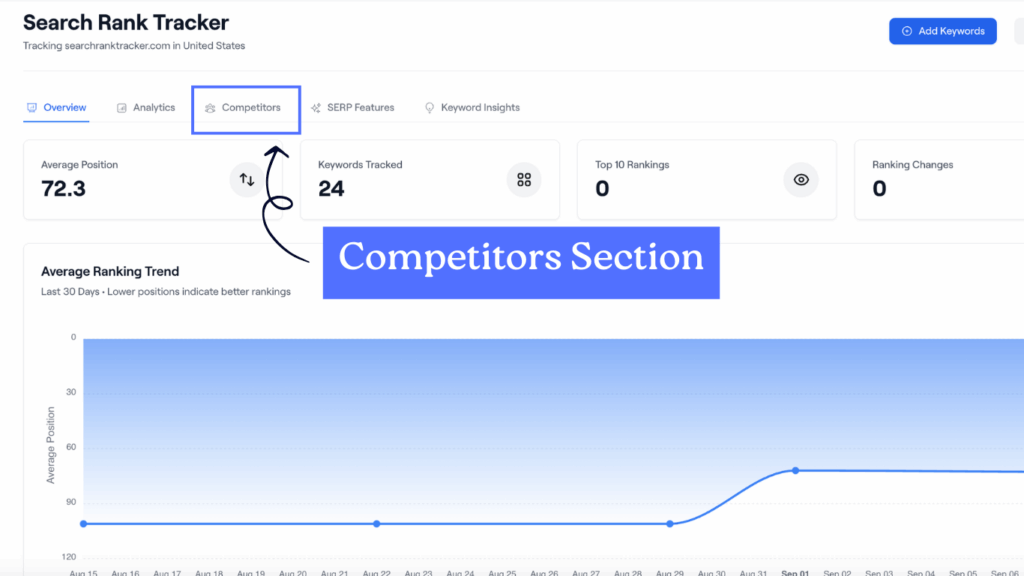
Once you click on the “Competitors” tab, you will be taken to the competitors section, as shown in the screenshot below.
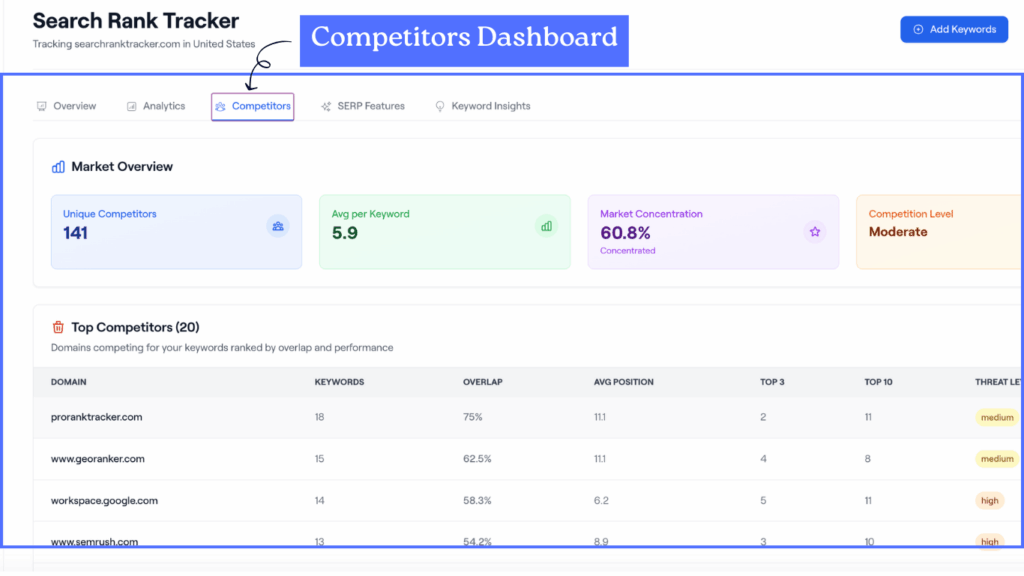
Understanding the Market Overview
At the very top of the Competitors dashboard, you’ll see a quick Market Overview.
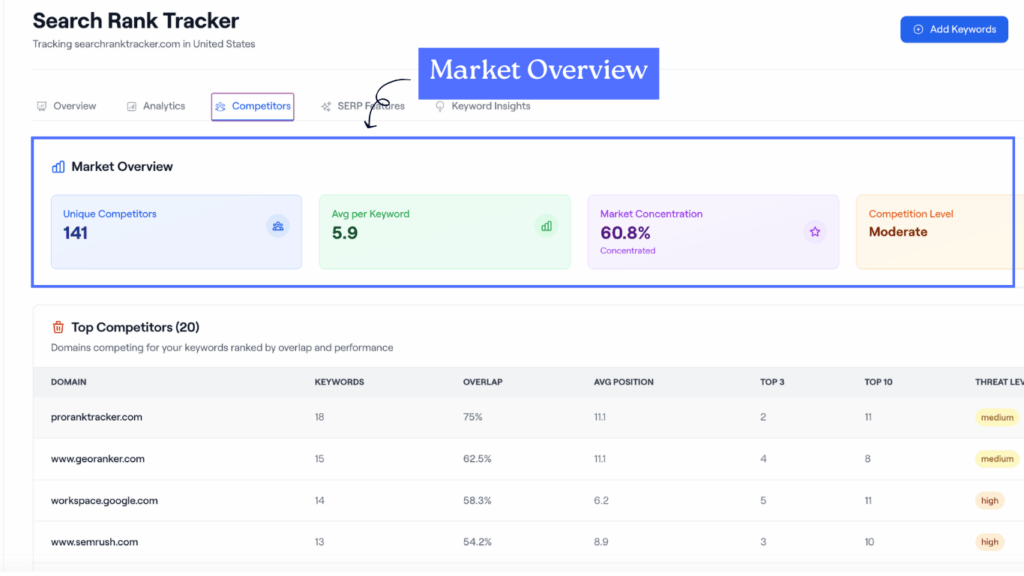
Here, you’ll get a quick glimpse of how your competitors are performing at the moment.
This is what each metric means:
- Unique Competitors – This metric counts the total number of websites that are competing with you across your tracked keywords.
- Avg per Keyword – On average, this metric shows how many competitors appear for every keyword you track. A larger number signals a more competitive keyword field.
- Market Concentration % – Here, you can see how the market is distributed versus how much it is controlled by a few players. A higher percentage means the majority of rankings are held by fewer websites.
- Competition Level – a simple label (Low, Moderate, or High) that tells you how fierce the competition is overall.
Breaking Down the Top Competitors Table
Just beneath the overview, you’ll find a table that highlights your Top Competitors along with their keywords, overlap percentage, average positions, and several other metrics that give you clarity about their local SEO presence.
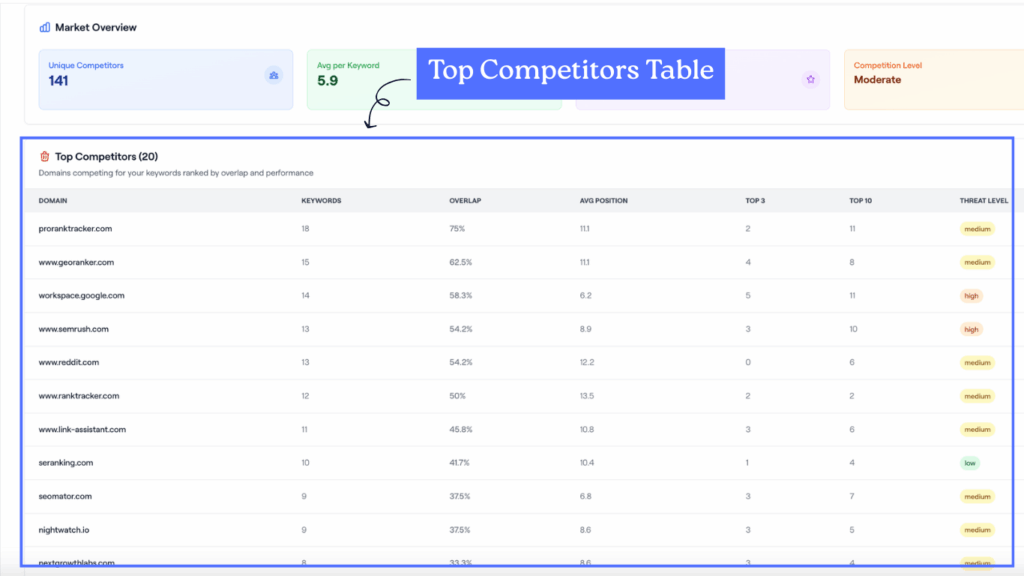
Let’s go through each column and see what its metrics mean.
- Domain – the website competing with you.
- Keywords – how many of your tracked keywords they also rank for.
- Overlap % – the percentage of your keywords they share. The higher the overlap, the more directly you’re in competition.
- Avg Position – their average ranking position across those overlapping keywords.
- Top 3 / Top 10 – how many keywords they’ve secured in the top spots on Google.
- Threat Level – a quick way to see how much of a danger they are to your visibility (Low, Medium, or High).
How to Interpret Competitor Data
Now that you have the competitor data in hand, it’s time to analyse it and make informed business decisions. Keep in mind that numbers and percentage don’t always tell the entire story.
You should think about how those numbers affect your SEO and what changes they represent.
Here are a few tips that put things into perspective:
- Direct competitors – If a site has a high overlap percentage and ranks well in the top 10, they’re some of your most important competitors.
- Rising competitors – Rising competitors, as the name suggests, are sites gaining momentum while covering topics similar to yours. If the pattern continues, they could pose real competition in the near future.
- Dominant players – Sites holding multiple keywords at the top won’t be easy to surpass, but if you want to take their spots, their strategies are worth studying.
- Low-level competitors – Sites that share a few of your keywords but rank poorly. They pose no urgency, though they may reveal opportunities you’ve missed.
Targeting hyper-local competitors? Use our local rank tracker, complete with a local search grid, and enjoy 300 free credits to get started.
Practical Ways to Use This Data
Keeping an eye on your competitors is not only about knowing the names of their products. When you observe what other companies are doing, you equip yourself to act wisely.
Have a look at some simple ways to make use of this information below.
- Keyword gap analysis – If a competitor ranks for a keyword you don’t, that’s a content opportunity.
- Content opportunities – If competitors rank but have weak content, you can create something better and outrank them.
- Local SEO insights – If you’re working in a specific city or region, tracking local competitors shows you exactly who you need to beat in that area.
- Industry shifts – If new domains appear regularly, it means your market is evolving. Staying aware helps you adapt faster than others.
Best Practices for Competitor Monitoring
Analysing competitors and achieving success in local SEO doesn’t happen overnight.
However, by following consistent, well-planned practices, you can surely and steadily move toward better results.
Try to keep these best practices in mind:
- Check regularly – Since SEO is always in flux, competitors will often swap rankings with you over time. That’s why it’s important to check your search position more than once.
- Track big and small competitors – When selecting competitors, study companies of different sizes — not just the largest — to find new ways to grow.
- Don’t just copy; adapt – Never copy strategies of others, instead use competitor insights to inspire your strategy.
- Cross-check with your own rankings – Competitor insights alone won’t drive your business forward. Combine competitor monitoring with your ranking distribution to identify gaps in the local SEO landscape.
Wrapping Up
Studying competitors has always been a great way to get ahead in the world of SEO.
With our Search Rank Tracker’s Competitors feature, you can get a clear view of what your competitors are doing, particularly with the same keywords you target.
Using those insights, along with real-time updates coming in at the right time, you can act quickly, refine your SEO strategy, and make use of opportunities your competitors haven’t capitalized on yet.
Curious how your competitors are performing in Google search?
Use our rank tracker to find out. Start today with 300 free credits — no card required — and begin uncovering actionable insights.
If you need help interpreting competitor data, reach out to [email protected]